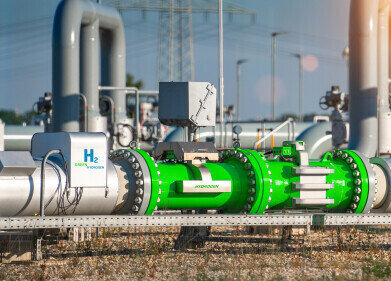Biofuel industry news
What is Process Analytical Technology (PAT)?
Oct 29 2021
From pharmaceutical to petrochemicals, most industries are subject to strict quality control regulations. To comply with these rigorously enforced rules, companies have embraced a concept known as Process Analytical Technology (PAT).
The United States Food and Drug Administration defines PAT as “a mechanism to design, analyse, and control pharmaceutical manufacturing processes through the measurement of critical process parameters which affect critical quality attributes.”
While the concept has become popular in the pharmaceuticals sector, it’s also a valuable tool for the petrochemicals industry. Producers and refiners utilise a range of tools, including chromatographic compositional analysers, spectrometers and fixed purpose sensors to analyse samples and extract complex data from both feedstocks and finished products.
The advent of PAT
Process analytical technology was pioneered in the 1970s, when researchers paired personal computers with advanced analytical chemistry techniques. This unlocked exciting new opportunities for data analysis and processing.
Today, PAT is used across a wide range of industries, with German scientists Rudolf W. Kessler and Waltraud Kessler asserting the goal is to “develop and integrate context-sensitive intelligent sensors to enable understanding of the process at the basic mechanistic (molecular) level in order to achieve knowledge-based production in the future.”
The role of NIR spectroscopy
While Process Analytical Technology is an umbrella term that encompasses a range of different techniques and technologies, near infrared spectroscopy (NIR) is one of the most important. The advanced analytical technique is used to determine the chemical and physical properties of a sample, as well as quantify component concentrations. This makes it an especially valuable tool for the petrochemicals industry, where the hydrocarbon compositions of mixtures are often incredibly complex.
PAT and biofuels
As PAT continues to gain momentum in the petrochemicals sector, biofuels manufacturers are eyeing it as a valuable tool for assessing the variability of raw materials, managing inconsistencies during the production process and improving quality control procedures.
“The potential of PAT in manufacturing areas other than the pharmaceutical industry is far from properly exploited, mainly due to the insufficient use of intrinsically multiparametric monitoring tools (i.e., NIR), the disregarding or ineffective use of available process information (data on historical batches or on raw-material lots), and the lack of a process- or plant-wide perspective for the proposed PAT strategy,” reads an article exploring the uses of PAT in biofuels production.
Want to know more about what’s next for the biofuels sector? Don’t miss insight from Dr. Raj Shah on behalf of Koehler Instrument Company in ‘The Study of Unique Additive Chemistry in Environmentally Acceptable Lubricants’.
Digital Edition
PIN 26.1 Feb/Mar 2025
March 2025
Analytical Instrumentation - Elemental Analysis for Quality and Process Control at Refineries, for Lubricants and Wear Metals in Engine Oils - Synthetic Lubricants: New Developments - Scaling...
View all digital editions
Events
Apr 14 2025 Moscow, Russia
Apr 15 2025 Moscow, Russia
Apr 22 2025 Hammamet, Tunisia
Apr 22 2025 Kintex, South Korea
Solar & Energy Storage Summit 2025
Apr 23 2025 Denver, CO, USA



















